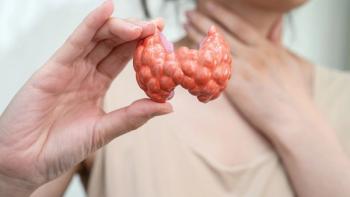
Causes of Thyroid Cancer
New research sheds lights on the causes of thyroid cancer, overdiagnosis of PTC
Causes of Thyroid Cancer- Differentiated thyroid cancers – also known as papillary and follicular thyroid cancers – don’t play by the same rules as other cancers. Although in advanced forms of the diseases, external beam radiation and chemotherapies may be called for, they tend to be treated with partial or complete thyroidectomies, and sometimes followed by radioactive iodine. While these treatments tend to be less harsh than other forms of cancer, trust me when I say that they are no walk in the park. To add to this, the medical community is at odds as to how long to follow patients for possible recurrences, as some recurrences have been documented to be as many as thirty-five years out!
With those issues in mind, let’s takes some time today to discuss what causes differentiated thyroid cancers (DTCs), how and how often they are diagnosed, and a glimpse at discussions in the medical community concerning what is termed “overdiagnosis.”
What causes thyroid cancer?
The simplest answer to this question is that scientists don’t really know what causes thyroid cancer. There are many theories and risk factors at play such as:
- Female gender
- Age
- Mutations in certain genes
- Carney complex, type one
- Cowden disease
- Family history of DTC
- Iodine (too little may contribute to follicular thyroid cancer, while too much may contribute to papillary thyroid cancer)
- Obesity*
I want to take a moment to visit about obesity and its role in the development of DTCs. In an article released in May 2020, Johnathan Fussey and his colleagues examined data from patients in Europe, to determine if obesity could be a cause of benign thyroid nodules or DTCs. Their research did not reveal a causal relationship between obesity and either condition; however, there was a link found between Type 2 Diabetes and thyroid cancer. It is important to note that a link does not imply a cause one way or the other – but it gives justification for more investigation.
Another interesting study was released in February 2021 by Cari Kitahara and her colleagues examining the effects of certain conditions of our mothers while we were babies in the womb. Looking at data from Norway, Denmark, Finland, and Sweeden over years spanning up to 1967-2015, they found that mothers with thyroid disorders (hypothyroidism, hyperthyroidism, goiter, and even benign thyroid nodules) were more likely to have children that would one day be diagnosed with thyroid cancer.
Thyroid cancer by the numbers
In 2021, there are projected to be about 44,280 new cases of
Overdiagnosis of thyroid cancer
Doctors and researchers have been saying for many years that thyroid cancer is overdiagnosed and that it is a big problem. So, what is overdiagnosis? The answer to that is fairly simple, but the term leaves something to be desired. Overdiagnosis is a true diagnosis of cancer that has been confirmed by biopsy, but it is found in a person that is expected to outlive cancer (that the person would likely die of other natural causes before cancer does). Clear as mud, right?
So, if it’s a true diagnosis – then what’s the big deal?
Well, that’s where we get into things such as treating a disease that won’t affect a person in any appreciable way. This is huge in terms of not only monetary costs, but also stress and anxiety on the part of the patient and loved ones, and also utilization of an already stressed healthcare delivery system. Think of it this way – say you have a bunion that doesn’t really bother you at all. Do you treat it now, or wait till it's bothering you? I know that a bunion is in no way, shape, or form even close to cancer, but it’s the first analogy that popped into my head.
With that, doctors and scientists have been revising the criteria for performing a biopsy on thyroid nodules and suspected cancers, especially in low-risk populations (those folks without significant risk factors), such that fewer cases will be “overdiagnosed,” which could help ease the burden on both patients and healthcare systems.
As always, much love, many prayers, and abundant blessings to all of the warriors out there!!





